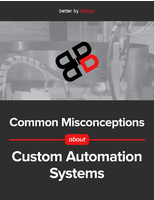ASTM Committee approves continuing obligations standard.
Press Release Summary:
Approved by ASTM International Committee E50 on Environmental Assessment, Risk Management, and Corrective Action, ASTM E2790 provides framework that can be used when designing and performing continuing obligations, thus bringing uniformity to process without recipe-like or prescriptive approach. Continuing obligations are management procedures for property on which future use moves forward even though residual contamination may remain in soil or groundwater.
Original Press Release:
New Continuing Obligations Standard Approved by ASTM Environmental Assessment Committee
W. CONSHOHOCKEN, Pa., - Continuing obligations are management procedures for property on which future use moves forward even though residual contamination may remain in the soil or groundwater. A new standard on addressing continuing obligations has now been approved by ASTM International Committee E50 on Environmental Assessment, Risk Management and Corrective Action.
ASTM E2790, Guide for Identifying and Complying with Continuing Obligations, was developed by Subcommittee E50.02 on Real Estate Assessment and Management.
Michael Sowinski, vice president, Terradex Inc., and an E50.02 member, notes that the use of continuing obligations is an increasing trend because the cost of pristine-level cleanups often makes property recycling prohibitive.
"Both industry and regulators generally agree that safe future use can occur even when some contamination remains, for example, tucked underneath buildings or parking lots, presuming responsible management procedures prevent dangerous exposures," says Sowinski.
"ASTM E2790 provides a framework that can be used when designing and performing continuing obligations, thus bringing uniformity to the process without a recipe-like or prescriptive approach," says Sowinski. The standard recommends the following four-step approach:
o A screening process to help identify whether continuing obligations are relevant;
o Steps for learning about the environmental conditions, including institutional controls and/or recognized environmental conditions so that continuing obligation procedures can be appropriately designed for site specifics;
o Suggestions for immediate steps to take soon after the need for continuing obligations arise, usually shortly after property purchase; and
o Long-term inspection, monitoring and management procedures meant to make sure that, over time, proper monitoring, inspection and management of property conditions keep people and the environment safe.
The framework provided by these steps will allow users to develop a continuing obligations plan that, when completed, will set an agenda for the actual continuing obligations to be performed.
According to Sowinski, primary users of E2790 will be those who purchased contaminated property, or later learned that the property they purchased was contaminated, and desire to remain eligible for defenses to environmental liability made available under the Comprehensive Environmental Response, Compensation and Liability Act. These include the bona fide prospective purchaser defense, the contiguous property owner defense and the innocent landowner defense.
"These defenses, among other things, require owners seeking the defense to show they have performed continuing obligations," says Sowinski. "In addition to these users, other landowners of contaminated property often wish to properly manage contamination or institutional controls, even if they do not feel the need to qualify for CERCLA defenses. This situation arises for many reasons, ranging from a desire to responsibly steward property that is being recycled to the need to comply with state law requirements, such as the need to periodically assure state regulators that institutional controls remain effectively operating."
To purchase ASTM standards, visit www.astm.org and search by the standard designation number, or contact ASTM Customer Relations (phone: 610-832-9585; service@astm.org). ASTM International welcomes and encourages participation in the development of its standards. For more information on becoming an ASTM member, visit www.astm.org/JOIN.
ASTM International is one of the largest international standards development and delivery systems in the world. ASTM International meets the World Trade Organization (WTO) principles for the development of international standards: coherence, consensus, development dimension, effectiveness, impartiality, openness, relevance and transparency. ASTM standards are accepted and used in research and development, product testing, quality systems and commercial transactions.
View this release on the ASTM Web site at www.astmnewsroom.org.
ASTM Committee E50 Next Meeting: Oct. 31-Nov. 3, October Committee Week, Tampa, Fla.
Technical Contact: J. Michael Sowinski Jr., Terradex, Carlsbad, Calif., Phone: 760-978-6120; mike@terradex.com
ASTM Staff Contact: Daniel Smith, Phone: 610-832-9727; dsmith@astm.org
ASTM PR Contact: Barbara Schindler, Phone: 610-832-9603; bschindl@astm.org




